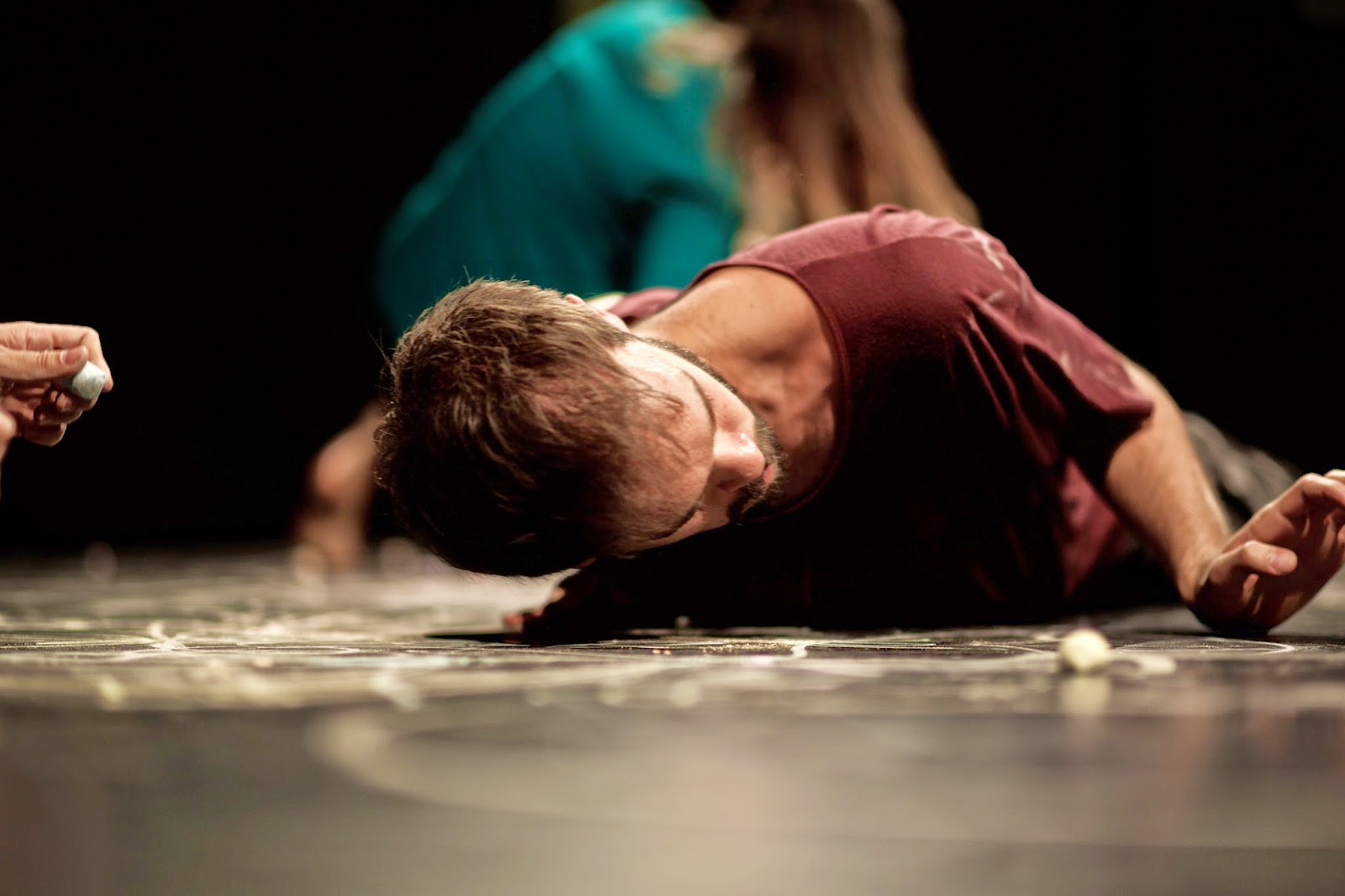"Neodanza" from Venezuela shows "18 minutos por 2 1/2 tiempos'bolo" at Mousonturm
Where once there was only free expression, should be shaped. Where only is still form, the effect is missing. In the intricate connection between the two, it seems, is for the dance at the time the particular challenge. The Slovenian Iztoc Kovac, in its scenic arrangements and body images reflected the experiences of an entire industry landscape, or the New York-based Israeli Amiel Malalé, who with his play of differences elicits the postmodern minimalism the traumatically-compulsive memory of the Holocaust - the echo social experience penetrates again amplified from the resonant cavity of the dance in the public laboratories.
The Venezuelan company Neodanza can belong to this group of artists who have indeed learned the lessons of dance abstraction, where the pure form as a means of expression but is no longer anything. Economical and limited in the language of movement, which per se does not get beyond a replaceable, always same sequence of tension and relaxation, traps and upright, the movements gain only in the friction with the stage objects their autonomy and fascination. Where the constantly quickly and cheaply produced by wild shake of the head and flying hair effect of aggressiveness fizzles soon, the actual weight of the piece lies in the formulation of a collective experience that goes far beyond the horizons subjective feelings.
For the Cuban choreographer and dancer Alexey Taran, the early nineties, Cuba and the Cuban National Ballet left in order to join the company Neodanza headed by Ines Rojas in 1992 in Venezuela, the combination of anonymous violence and pleasure is central to the work. Inspired by the writings of Georges Bataille's designs Taran in "18 minutos por 2 1/2 tiempos'bolo", with whom he won the choreographer competition in Bagnolet and that was now to be seen in Mousonturm, an oppressive nightmare scenario, in which the three dancers and the a dancer (Taran himself) has taken all forms of individuality. If you do not cover up the hair the face, clears a white stocking similar mask of their physiognomy.
At the beginning they sit with their backs to the audience on a row of chairs on the ramp. Their heads fall down limply, as if they were about to fall asleep. Alarmed by hammering Industrial music, to which later joined by a few swelling violins, they begin in a four-ship formation chorea with iron chairs, their arms and back can be folded out. Sandwiched as an instrument of torture, their bodies lay around the metal, as by flashes of electric shocks to an electric chair, stretch out all fours. Taran leads the group mostly in formation and interrupts this rigor sometimes only by a solo or duo that enjoys himself in a water-filled bathtub. Trapped in variable light rectangles that migrate during the evening on the stage and restrict the activities of the dancers again, they rely on sticks, the slip again and bring them down. Hooked into each other, the sticks are then into a kind of bondage that makes their own motion of a comparison depend. A ballerina shirtless tried to stand on top. But it breaks again and again and finally moving with bent legs like a spider on the floor. The nature of the subject matter is so the movement in each case the form. Energy is produced by friction, the lust of the dancers breaks track on the objects.
"18 minutos" shows the fundamental dependence of man on (abstract) powers and (concrete) objects. The 60-minute long piece that was created with the help of German co-producers such as the Mousonturm and the Kampnagelfabrik in Hamburg, developed both a psychological and a political dimension that constantly rouses associations with arrests, imprisonment and torture in the Latin and South American dictatorships while watching , In pale neon light dipped, the stage is an inhospitable place. Cold the wind whistles through the ghostly scenario. Plastic hoses, the unmotivated hanging from the ceiling, water runs down to the exhausted dancers. GERALD Siegmund Caption: The individuality is lost: "Neodanza" for her appearance in Frankfurt Photo Karin Schander

























